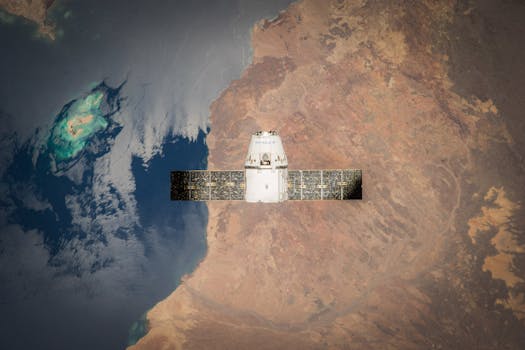
Eyes in the Sky: Advanced Technologies Transforming Earth Observation with Eyes in the Sky
Eyes in the Sky refers to the advanced technologies that are transforming the field of Earth observation. Eyes in the Sky have revolutionized the way we monitor and understand our planet, enabling us to track changes, predict patterns, and make informed decisions. From satellite imaging to remote sensing, these technologies have opened up new possibilities for fields such as environmental monitoring, agriculture, and urban planning.
Introduction to Earth Observation
Earth observation involves the collection and analysis of data about the Earth’s physical and biological systems. This can include information about the atmosphere, oceans, land surfaces, and living organisms. Traditional methods of Earth observation relied on ground-based measurements, which were often limited in scope and accuracy. However, with the advent of satellite technology, it became possible to collect data on a global scale, with much higher resolution and accuracy.
Advanced Technologies in Earth Observation
There are several advanced technologies that are driving the transformation of Earth observation. These include satellite imaging, remote sensing, and data analytics. Satellite imaging involves the use of satellites to collect images of the Earth’s surface. Remote sensing involves the use of sensors to collect data about the Earth’s physical and biological systems. Data analytics involves the use of algorithms and statistical models to extract insights from large datasets.
One of the key technologies driving the transformation of Earth observation is satellite imaging. Satellites in orbit around the Earth can collect images of the planet’s surface with remarkable resolution and accuracy. These images can be used to track changes in the environment, such as deforestation, sea level rise, and urbanization. They can also be used to monitor weather patterns, predict natural disasters, and optimize agricultural production.
Applications of Earth Observation
The applications of Earth observation are diverse and widespread. In environmental monitoring, Earth observation can be used to track changes in air and water quality, monitor wildlife populations, and predict the impacts of climate change. In agriculture, Earth observation can be used to optimize crop yields, predict soil moisture, and detect early signs of disease and pests. In urban planning, Earth observation can be used to monitor urban growth, optimize transportation systems, and predict the impacts of natural disasters.
In addition to these practical applications, Earth observation also has the potential to drive scientific discovery and innovation. By analyzing large datasets and identifying patterns and trends, scientists can gain new insights into the Earth’s systems and processes. This can lead to a deeper understanding of the planet and its place in the universe, as well as the development of new technologies and industries.
Conclusion
In conclusion, Eyes in the Sky are transforming the field of Earth observation, enabling us to monitor and understand our planet like never before. With advanced technologies such as satellite imaging, remote sensing, and data analytics, we can track changes, predict patterns, and make informed decisions. The applications of Earth observation are diverse and widespread, from environmental monitoring and agriculture to urban planning and scientific discovery. As these technologies continue to evolve and improve, we can expect to see even more innovative applications and discoveries in the years to come.